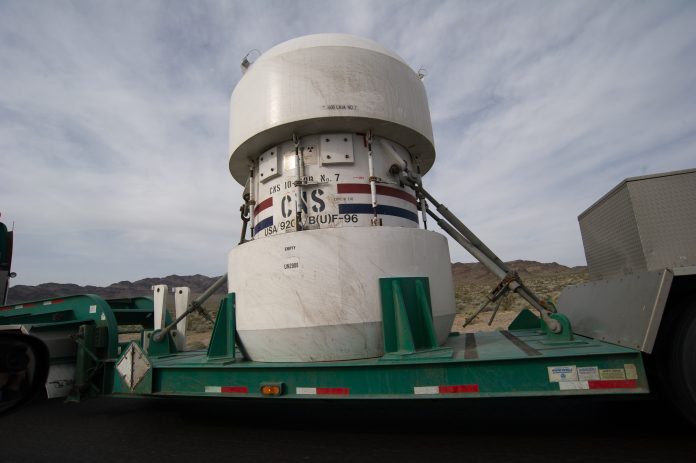The Utah Associated Municipal Power Systems (UAMPS) and NuScale Power Corporation decided to cancel a project that would have produced 462 megawatts of nuclear power using small modular reactors (SMRs), due to cost issues.
The plant would have been built in Idaho Falls, Idaho, at the U.S. Department of Energy’s Idaho National Laboratory. However, the “Carbon Free Power Project” fell through with both involved parties agreeing to termination. The project was not able to generate enough capital from investors. Cities made power purchase agreements for specific amounts of power at agreed-upon to prices to fund the project. As costs rose, cities began dropping out of the agreement, making it infeasible for NuScale to continue.
NuScale’s is the first and only SMR to have its design officially certified by the U.S. Nuclear Regulatory Commission. The federal government and industry are developing SMR reactors in the hope that they will be less expensive to construct and can get through the regulatory process more easily and quickly, bringing reliable carbon-dioxide-emissions-free energy online more quickly than full-sized reactors. The small water-cooled reactors can produce 77 megawatts per SMR unit, as compared to units like those used in the Georgia Vogtle plant that provide more than 2,000 megawatts each.
‘Inflationary pressures’
NuScale foresaw trouble for the plan as far back as January 2023, when it cited “inflationary pressures” and the prices of construction commodities as heavily influencing their estimated costs. The company noted that inflation and supply-chain issues have likewise had an impact on the costs of all infrastructure projects, according to a press release on the company’s website.
“[T]he cost of the CFPP has been influenced by external factors such as inflationary pressures and increases in the price of steel, electrical equipment and other construction commodities not seen for more than 40 years,” the NuScale document states. “For example, the producer price index for commodities such as carbon steel piping and fabricated steel plates have increased by more than 50% since 2020.”
Regulatory Hurdles
Nuclear receives less federal support in the form of subsidies and normal business tax credits than any other form of “emissions-free” power.
Despite making up 18 percent of electricity generation in the United States, nuclear received only 1.5 percent of federal energy subsidies and tax credits between 2016 and 2022. Traditional nuclear facilities have been more expensive to construct due to special regulatory processes for nuclear energy.
The cost burdens of federal compliance and approvals even for the SMR have contributed to the project’s high costs, says Paige Lambermont, energy research fellow at the Competitive Enterprise Institute, as regulatory costs are “one of the toughest hurdles” for new nuclear developers trying to get projects started.
“NuScale spent more than $500 million on the Nuclear Regulatory Commission design approval process alone,” Lambermont said. “Even on a project receiving DOE funding and support, and which was able to avoid some regulatory issues by building on a National Lab site, this project was not insulated from the costs of Nuclear Regulatory Commission compliance.”
For novel, advanced nuclear projects to succeed into the future, regulatory costs will have to be lower, says Lambermont.
“Reducing the regulatory burden of innovation is essential to ensuring that other advanced nuclear projects in development don’t face similar problems,” Lambermont said.
High Upfront Costs
High interest rates and a poor investment environment also contributed to the project’s termination, Lambermont said.
“Capital-intensive projects are naturally quite sensitive to interest rate fluctuations, and what worked well in a low-interest rate environment is much harder to manage in the present environment,” Lambermont said. “New nuclear projects have a lot of potential, but high upfront costs.”
SMR Technology Moving Forward
Other companies should be able to examine the NuScale/UAMPS project as a case study, to understand what hurdles exist and what problems might be anticipated and avoided to bring future SMR projects successfully online, says Lambermont.
“Hopefully, this project will provide meaningful lessons for the other companies working in the same space going forward,” Lambermont said. “There are plenty of other companies working to develop new nuclear technology right now, and this project not moving forward should not discount the potential of those others.”
Indeed, NuScale itself still has other SMR plant projects underway, including in Missouri, North Carolina, Ohio, Pennsylvania, and Wisconsin, for both utility power and on-site electricity for energy-intensive manufacturing facilities like steel mills. The company plans to move ahead with their other plans despite the expensive setback, John Hopkins, NuScale’s president, said in the press release explaining the Carbon Free Power Project’s cancellation.
“NuScale will continue with our other domestic and international customers to bring our American SMR technology to market and grow the U.S. nuclear manufacturing base, creating jobs across the U.S.,” Hopkins said.
Linnea Lueken (llueken@heartland.org) is a research fellow with the Arthur B. Robinson Center on Climate and Environmental Policy at The Heartland Institute.
For more on nuclear power, click here.



























Please make a connection between the photo of a truck-mounted containment vessel and the rest of the article.